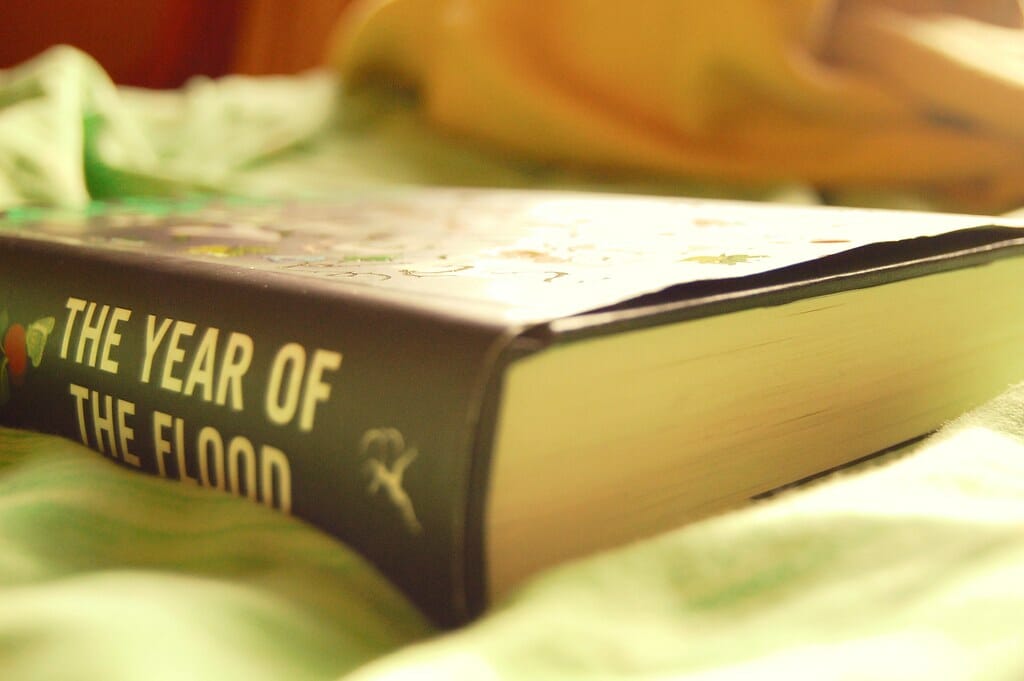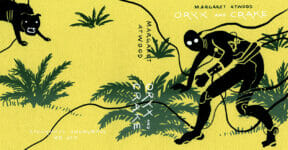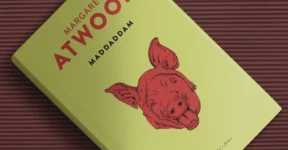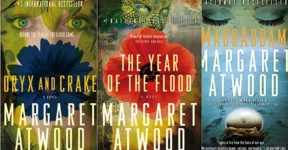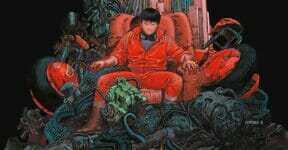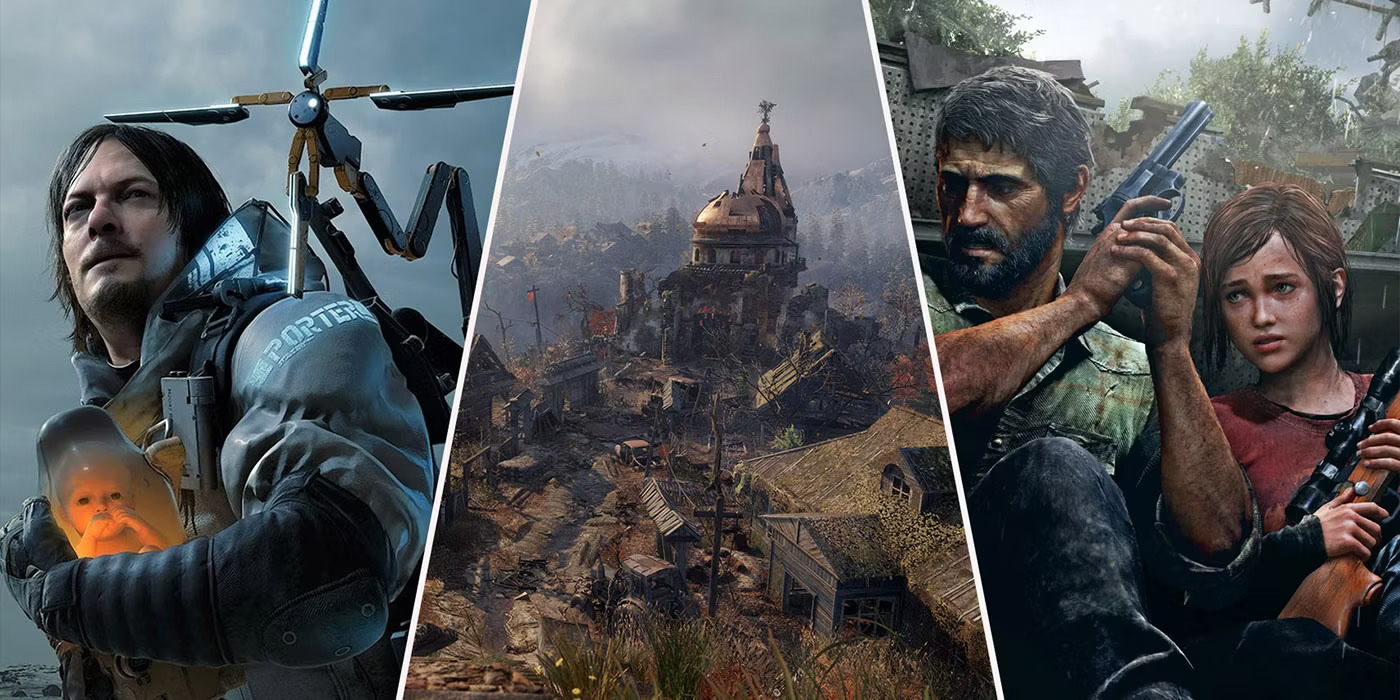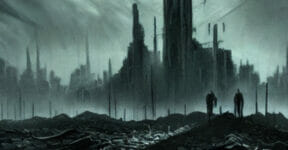The 2nd book in the MaddAddam trilogy by Margaret Atwood is titled The Year of the Flood. In the previous book, Oryx and Crake, the author delivers a striking image of a destroyed world inhabited by few humans and many bioengineered humanoids called the Crakers. A character named Snowman tells stories about Crake, the mad scientist behind the devastation, and Oryx, their lover. Approaching the end of the novel, Snowman considers ending humanity entirely, allowing the genetically modified creatures to figure everything out on their own.
A Different Perspective
According to the author, The Year of the Flood is neither a prequel nor a sequel to Oryx and Crake. Events in both novels take place around the same time in the not-so-distant future. The storyline begins with an assumption that most of the human population has gone. As a species, humanity is now on the brink of extinction. It starts in Year 25—or the year of the flood—but it gives no further explanation about the nature of the flood until later. Readers eventually learn that the title is a reference to the story of a biblical flood intended to eradicate humanity and start the world with a fresh breed, but this time without the water. The flood in the novel is a hemorrhagic virus, the beginning of a global pandemic of infertility.
Old and New Characters
Since the storyline in Oryx and Crake runs along more or less the same period as The Year of the Flood, several characters in the former also appear in the latter. That said, the plotline is driven by a set of new names such as an organization called God’s Gardeners, the Corporations, a security arm known as CorpSeCorps, and characters Toby, Ren, Adam One, and Blanco.
Atwood describes God’s Gardener as a cult of hardcore vegetarians, living in gardens on building rooftops to stay safe from violent gangs on the street. Members recycle their outfits, and they practically have no sense of fashion at all. Everything about the cult is going back to nature and takes it to an extreme level. They live simple organic lives and often do evangelical work for the lower-class neighborhood of pleeblands.
The values of God’s Gardeners are in direct opposition to those of the Corporations. Like in Oryx and Crake, all technologies and signs of civilizations are private properties. There is no functioning government. The main purpose of Corporations is to accumulate wealth and keep the population as deprived as possible. Ecological balance and natural resources are never objects of concern.
One of the active proponents of the CorpSeCorps is Glenn, who eventually becomes Crake. Although he initially was a sympathizer for the all-vegetarian cult, he was lured into a destructive mindset by his own distrust of humanity. Things turn from bad to worse when Crake learns that his feelings for Oryx are not mutual. To some extent, Atwood illustrates what happens when a person of massive power cannot fulfil the desire to love and be loved.
The story of Blanco also makes for a perfect illustration of how sadism takes over when love is missing from someone’s life. He is the manager at SecretBurgers and a rapist, who never ceases to try and force Toby into sexual slavery. And just when things appear hopeless, the evangelical God’s Gardeners come to the rescue. Blanco has become even more obsessed with finding Toby, who is now officially a member of the cult. She even changes her appearance and assumes a new identity to escape her former boss. Toby is constantly on the run from the sexual predator, whereas Ren is a prostitute at a brothel.
The two characters’ fates will intertwine at the end of the novel, but before then they have very different lives for the same purpose of survival. Another major character is the mysterious Adam One, the leader of God’s Gardener. Throughout the novel, he gives speeches and sermons about an impending disaster, as if the cult has long been making predictions about the waterless flood.
The end of The Year of the Flood also is the end of Oryx and Crake. One can almost say that the second novel in the series re-tells the stories already delivered in the first, but there are different characters to offer new perspectives and details on the destroyed world without sacrificing storyline continuity.
Dystopian Novel
When asked to define a genre for The Year of the Flood, the author refers to it as dystopian. Most people agree that dystopia is a subgenre of sci-fi and is often seen as speculative fiction, but Atwood herself avoids using the term “fiction.” She argues that in certain places in the world, for example, North Korea, dystopia is not an imaginary future; oppression, deprivation, totalitarianism, lack of freedom, and basically everything associated with dystopia are happening in the country.
On the topic of predicting the post-apocalyptic backdrop, Atwood explains The Year of the Flood is far from being a prophecy. While it is impossible to predict the future, anybody can observe the current trends and extrapolate from the available data. The novel is not a prediction; Atwood used a particular view of the present-day situations and built a world in the novel based on her own interpretations.
We think The Year of the Flood is as exciting as the first novel in the series. It offers an imaginative exploration of an environmentally barren world dominated by private corporations. The characters are complex and natural with their own flaws. Some of the stories are truly bizarre, even by modern sci-fi standards, but Atwood’s enthralling words can make the farfetched believable.
Did you read The Year of the Flood? Do you think it is a worthy companion to Oryx and Crake? Let us know. We’d love to hear from you.
Other things you might want to know.
Since the timeline is almost parallel, does The Year of the Flood add something to Oryx and Crake?
From the narrative point of view, The Year of the Flood has little reason to exist. It is set in the same world and the events cover roughly the same timeline as Oryx and Crake. However, the second novel offers new insights into the nature of the apocalyptic event described in the first.
Does it contain any social theme at all?
At least two major themes come to mind: the consequence of uncontrolled capitalism and the environment-focused religious movement. Uncontrolled capitalism is represented by the Corporations, whereas religion is depicted by God’s Gardener cult.
Has the novel won any award?
The Year of the Flood has not received any internationally recognized award. It was shortlisted for the 2010 Trillium Book Award and longlisted for the International Dublin Literary Award.
Check out other articles by month:

